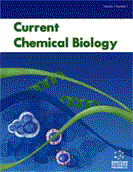Abstract
Background: Multiple Endocrine Neoplasia Type 1 is caused by mutation in MEN1 genes that leads to parathyroid adenoma, duodenopancreatic neuroendocrine tumors, and pituitary adenomas.It also initiator of benign Lipomas, angiiofibromas and carcinoid tumor of thymus and lungs. It also incorporated in many such as transcription regulation, apoptosis, cell cycle control and DNA damage repair mechanisms.
Methodology: The following mutations i.e. P12L, L22R, E45K, G110E, F144V, I147F, G161D, C170R, E184D and V220M in MEN1 were selected that were already reported. By using bioinformatics approaches check single amino acid substitution either their effect on protein structure, function and stability. In this methodology MODELLER, Chimera, NetSurfP, SNAP, IUPred, Polyphen and CDD were used.
Result: All the predicted structure were showing accuracy greater than 90%. Also checked that L22R, E45K, F144V, I147F, G161D, C170R and V220M mutation were present in helix of mutated model and P12L, G110E and E184D are present in coil region. In P12L, E184D and G110E, mutation in exposed amino and their relative surface accessibility were decreased. While in L22R, E45K, F114V, I147F, G161D, C170R and V220M were present in the form of buried amino acid and their relative surface accessibility increased. These prediction showing expected accuracy of 78%, 82%, and 96%, 63%, 78%, 78%, 96%, 93%, 87% and 78% respectively in functionality changes. In case of structural damaging all the mutation showing high damaging effect on their function but their disorder tendency were low.
Conclusion: Our results have shown that missense mutations P12L, L22R, E45K, G110E, F144V, I147F, G161D, C170R, E184D and V220M have strong structural, conformational, Function and pathogenic but low tendency order. This research helpful for clinical work at MEN1 genes to find out which mutation is responsible for disease causing.
Keywords: Conformational changes, disorder tendency, insilco.
Graphical Abstract
Current Chemical Biology
Title:Application of Bioinformatics to Investigate the Mutant Alleles of Multiple Endocrine Neoplasia Type 1 on its Structure, Function and Stability
Volume: 10 Issue: 2
Author(s): Muhammad A. Hassan, Muhammad Qasim, Aqib Z. Khan, Mohsin A. Nasir, Mohammad Bilal and Simon Manzoor
Affiliation:
Keywords: Conformational changes, disorder tendency, insilco.
Abstract: Background: Multiple Endocrine Neoplasia Type 1 is caused by mutation in MEN1 genes that leads to parathyroid adenoma, duodenopancreatic neuroendocrine tumors, and pituitary adenomas.It also initiator of benign Lipomas, angiiofibromas and carcinoid tumor of thymus and lungs. It also incorporated in many such as transcription regulation, apoptosis, cell cycle control and DNA damage repair mechanisms.
Methodology: The following mutations i.e. P12L, L22R, E45K, G110E, F144V, I147F, G161D, C170R, E184D and V220M in MEN1 were selected that were already reported. By using bioinformatics approaches check single amino acid substitution either their effect on protein structure, function and stability. In this methodology MODELLER, Chimera, NetSurfP, SNAP, IUPred, Polyphen and CDD were used.
Result: All the predicted structure were showing accuracy greater than 90%. Also checked that L22R, E45K, F144V, I147F, G161D, C170R and V220M mutation were present in helix of mutated model and P12L, G110E and E184D are present in coil region. In P12L, E184D and G110E, mutation in exposed amino and their relative surface accessibility were decreased. While in L22R, E45K, F114V, I147F, G161D, C170R and V220M were present in the form of buried amino acid and their relative surface accessibility increased. These prediction showing expected accuracy of 78%, 82%, and 96%, 63%, 78%, 78%, 96%, 93%, 87% and 78% respectively in functionality changes. In case of structural damaging all the mutation showing high damaging effect on their function but their disorder tendency were low.
Conclusion: Our results have shown that missense mutations P12L, L22R, E45K, G110E, F144V, I147F, G161D, C170R, E184D and V220M have strong structural, conformational, Function and pathogenic but low tendency order. This research helpful for clinical work at MEN1 genes to find out which mutation is responsible for disease causing.
Export Options
About this article
Cite this article as:
Hassan A. Muhammad, Qasim Muhammad, Khan Z. Aqib, Nasir A. Mohsin, Bilal Mohammad and Manzoor Simon, Application of Bioinformatics to Investigate the Mutant Alleles of Multiple Endocrine Neoplasia Type 1 on its Structure, Function and Stability, Current Chemical Biology 2016; 10 (2) . https://dx.doi.org/10.2174/2212796810666161028113113
| DOI https://dx.doi.org/10.2174/2212796810666161028113113 |
Print ISSN 2212-7968 |
| Publisher Name Bentham Science Publisher |
Online ISSN 1872-3136 |
 19
19 2
2
- Author Guidelines
- Bentham Author Support Services (BASS)
- Graphical Abstracts
- Fabricating and Stating False Information
- Research Misconduct
- Post Publication Discussions and Corrections
- Publishing Ethics and Rectitude
- Increase Visibility of Your Article
- Archiving Policies
- Peer Review Workflow
- Order Your Article Before Print
- Promote Your Article
- Manuscript Transfer Facility
- Editorial Policies
- Allegations from Whistleblowers
- Announcements

















.jpeg)








